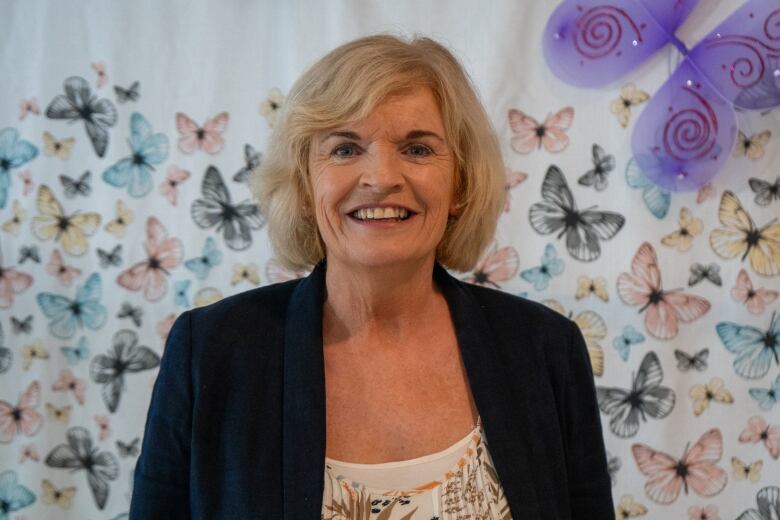Long-term care home in Thunder Bay to adopt new care model to help residents with dementia
The 'butterfly approach' has been replicated at several homes in province

A long-term care home in Thunder Bay, Ont., is adopting a new model of care with the goal of creating a more familiar environment for residents living with dementia.
The butterfly approach, led by health consultant group Meaningful Care Matters, aims to shift long-term care away from institutional settings into more accessible spaces, where residents have a greater say in their daily activities.
"It's a feelings-based approach. It's an emotion-based approach. It's moving away from task orientation and it's actually giving control back to the people that we care for," said Mary Neale, nurse consultant with Meaningful Care Matters.
"Giving control back to people actually helps them to evolve back to where they were at, helps them to be themselves."
Pioneer Ridge Long-Term Care and Senior Services, which houses 150 residents across four home areas on Tungsten St., will be integrating the new care model into its memory and dementia care section over the next 12 to 18 months.
"We've been having this discussion since 2007. We knew that the medical task model of care is not the person-centred model, and there are other models out there," said Judy Walters, who is leading the butterfly approach at Pioneer Ridge.
A launch party was held at Pioneer Ridge on Thursday, where staff and members of city council heard a presentation about what the butterfly approach entails.
No more 'us versus them'
Meaningful Care Homes has offices in the United Kingdom, Ireland, Australia and Canada. The group has helped 10 long-term care homes in Ontario become accredited with the butterfly approach, with nine others in the province currently going through the process.
Pioneer Ridge will be the first in northwestern Ontario to adopt this model.

At the heart of the strategy is getting rid of the perception that there's a power imbalance between staff and residents. For example, having staff wearplainclothes can help them appear more approachable, Kneale explained.
"When we see a uniform, we actually see power and we actually see somebody that is going to tell us what to do," she said.
"Breaking down the 'them and us' provides the people we care for with more freedom. It actually helps them to navigate through their day and feel like they're actually with family members."
Colour helps with co-ordination, wayfinding
The butterfly approach means having fewer staff-only spaces, encouraging employees to spend more quality time with residents, such as sitting with them and sharing stories.
It also encourages more colour and clutter in shared areas, instead of neutral-toned walls with minimal furniture.

"For those people who have dementia, their vision is four to five times less than ours, so they need to see those brighter colours," Kneale said, adding that residents are more likely to fall when the walls and floors blend together.
"It's also very good for wayfinding it may be that we have a green wall and it takes you to your bedroom, so those things help."
Pioneer Ridge has already added brightly-coloured wraps to residents' doors to help them remember where their rooms are. It also plans to repaint the walls to make them more vibrant.
"What we have also found is that staff love working in a bright environment, and they don't want to go back to beige," said Kneale.
Big learning curve ahead
Staff will receive several months of training to help them transition into the new model. Looking forward, there may be opportunities for post-secondary schools to offer courses in the butterfly approach to help seasoned workers upgrade their skills, Kneale said.
Walters admits it's a big undertaking, which some people who've worked in the field for years may find overwhelming.

"It's mixed. There are people that [feel] change is unknown and they don't know what they don't know," Walters said. "We are all in this together to learn and take training and it's going to be quite a journey.
"It's a whole new philosophy of care."
Her hope is that this model becomes the norm everywhere.
"I always want to say this expression that [residents] don't live in our workplace, we work in their home," Walters said. "I think we need to always remember that, and we can improve upon and make this home a real home."












_(720p).jpg)


 OFFICIAL HD MUSIC VIDEO.jpg)
.jpg)



























































































